Lockheed R3O-2, BuNo 02947; Rehins, County Mayo 1945
On Sunday, July 29th, 1945, an aircraft made an abrupt landing in a field near Rehins just south of Ballina in County Mayo in the west of Ireland. The war was but months over in Europe and Ireland had seen its fair share of crashes as can be seen on this site. The kind help of a number of researchers and viewing of the files at the Irish Military Archives however, have allowed some what of a picture to be built up.
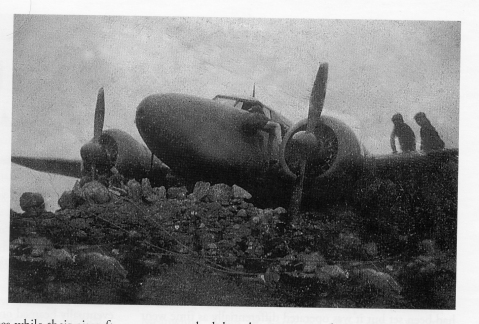 The photo at left was scanned from the book
'Landfall Ireland' by D MacCarron. In this book the photo is
incorrectly labled as a Lockheed Ventura from another incident.
The photo in that book was credited to Mrs Ursula Teague who
kindly gave permission for its use here. The two bladed
propellers on the aircraft in the photo are a give away that
this is a lighter aircraft than the Ventura bomber.
The photo at left was scanned from the book
'Landfall Ireland' by D MacCarron. In this book the photo is
incorrectly labled as a Lockheed Ventura from another incident.
The photo in that book was credited to Mrs Ursula Teague who
kindly gave permission for its use here. The two bladed
propellers on the aircraft in the photo are a give away that
this is a lighter aircraft than the Ventura bomber.
Research found details of the aircraft's July 29th 1945 flight
from the local Ballina Herald newspaper. This local paper
reported that the Lockheed was en route from Collinstown to
Lough Erne when it force-landed in a field at the rear of Mr
Frank Trimble's farmhouse at Rehins, 1.5 miles south of Ballina,
County Mayo, and hit a wall, damaging the undercarriage. On
board were "Flt/Lt Charles Dold",
from New York, "Flt/Sgt Hale",
from Texas, and two un-named civilians, described as an
Englishman and a Norwegian. No one was hurt. The aircraft had
run short of fuel and was off course. To further report from the
article, it went on to make a landing in a field which the
reporter told was the only suitable field in the area. The only
damage caused to the aircraft was reported to be "an engine
cowl, a wheel and one arm of the retractable undercarriage". The
article goes to dramatically describe how "Having
over run a hill, the plane was rolling fast towards"
an outhouse adjoining Mr. Trimbles house when "the pilot in an endeavor to 'avoid what
would have been a disastrous crash, swung the machine around
almost at a right angle". The article continues:
"One wheel then hit the top of the wall
a glancing blow and the aircraft came to a rest astride the
wall. Word was immediately sent to the military in Castlebar
and within a short time a number of Army men arrived to
guard the machine. In its sombre green and brown camouflage
paint, the plane was quickly surrounded by a large crowd of
sightseers".
The Irish Press and Irish Independant, on the Monday, July
30th, published the following short article:
U.S. PLANE DOWN NEAR BALLINA
An American Lockheed twin-engined transport plane which
left Collinstown aerodrome yesterday for Lough Erne made a
forced landing at Rehins, 1 1/2 miles south of Ballina,
yesterday evening. It carried, in addition to the American
pilot and sergeant, two English civilians. The undercarriage
of the plane suffered damage when it struck a wall 30 yards
behind the farmhouse of Mr. Frank Trimble. None of the
occupants suffered any injury.
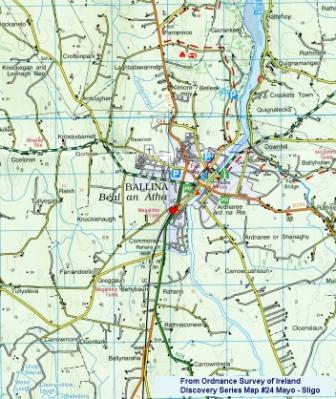
In contacting Mr. Trimble's son Wesley in 2008, he confirmed that no items or memories of the crash were retained by the family. Franks son was born after the event and he records that his parents never mentioned the crash much in the ensuing years. He does recall that they said that they provided food to the soldiers that were stationed at the aircraft. The site of the crash is now covered by a cattle shed but the field that they landed in was a large field and as such would have seemed a good choice for landing in. A shorter news story in the July 31st, Cork Examiner lists those on board as, "Wing Commander T. S. Cotton (London), First A/C Charles C Dodd (American), Sgt. Hale (Texas) and Mr. Janessen (Norwegian, London)."
During a visit to the Irish Military Archives in 2007 it was possible to view the Irish Military's files on this crash, G2/X/1426 & ACF-S-260. The reports contain running log entries concerning the outcome of the aircraft incident. The file is handwritten but the military authorities recorded the people on board as follows:
Crew:
1st Lt. Charles C Dold
Sgt. Hale
Passengers:
Mr. Cotton
Mr. Jonasses
The men stayed in a Guest house in Ballina on the night of the crash. Recollections printed in the Western People in late 2011, reported that this was the former Hurst Hotel in the town. An entry on the 30th July by the Western Command G2 officer notes that the aircraft carried no markings except for the "American star". No aircraft serial number or markings were recorded in the Irish Military files. On the 31st July permission was granted and customs permits arranged to allow the crew to have parts for the aircraft sent over the border in order that the Lockheed be repaired on site and flown out. It was noted that both the 'Army' men on board were in uniform, referring presumably to Dold and Hale.
The August 1st entries then mention that all but Sgt. Hale had
left the area on the previous day and crossed into Northern
Ireland and the replacement parts had not arrived. By the 2nd of
August, it had been decided that the aircraft was to be salvaged
and a party was to be escorted from the border to the aircraft
to carry out this work. The report mentions at this point that
Sgt. Hale, after four days, "remains
behind on rations with the 1st Btn". Troops from
the Irish Army 1st Battalion having provided the guard for the
aircraft.
The log for August 5th records that a call had been received by
Western Command that the aircraft was prepared for transfer
across the border in two low loader loads. One was scheduled to
pass over at 17:00 on that day while another, larger load would
pass through Monaghan the day after.
The recovery work was completed by Irish personnel assisted by
some from the Royal Air Force's 226 Maintenance Unit based at
Mallusk. In that units Operations Record Book (ORB), there
are two mentions of the aircraft, namely:
August 21st: Congratulatory
message received from H.Q. R.A.F. N.I. regarding salvage of
Lockhead 02947 at Ballina, Co. Mayo.
In the monthly summary, it is the sole American aircraft
salvaged, under the following entry: American aircraft salvaged X for X-ray
Lockhead 12A.
In 2003, a query arose on the Air Britain Information Exchange AB-IX forum concerning a British Ministry of Aircraft Production (MAP) contract to Short and Harland to cover the repair of a "US Navy R30-2947". John Gregory identified the aircraft as 02947 and Vic Smith was able to supply further information confirming the repair.
The subject aircraft, Lockheed 12A, construction number 1287 was delivered in August 1941 and assigned the US civilian registration NC33615. The original log books are not known to exist but sources record that the aircraft was ordered by Sky Kraft (or Skycraft) Corporation of Mobile, Alabama. It is suggested that the aircraft was bought by the famous Astor family or by the Guggenheim Foundation but this is unconfirmed. With the subsequent entry of the US into the war, the aircraft, like many others, was impressed for military use and passed on to the US Navy command where it gained the US Navy Bureau of Aeronautics serial Number 02947. It seems to have flown for some months in the United States, based at NAS Quonset Point, before being sent to England. The archives of the Commander United States Naval Forces in Europe (COMNAVEU) in April 1942 contain the following statement, which may relate to 02947: A letter of April 18, 1942, from Commander United States Naval Forces in Europe to U.S. Naval Forces in Europe, stated that, beginning April 23, 1942, the Lockheed aircraft attached to the Embassy Air Unit at Hendon will maintain frequent flights between London, Belfast and Londonderry. for the purposes of transporting Army and Navy passengers, mail and light freight.
In US Navy service the aircraft, constructors number (c/n) 1287, was designated as Lockheed R3O-2. At around this time seven new production Lockheed 12A's were purchased and designated Lockheed JO. Other Lockheed 12A's in US Army Air Force service were designated as C-40 and later UC-40. George Kernahan was able to provide details from the aircraft's navy history card:
R3O-2 BuNo 02947
Accepted: 23 August 1941
August 1941 to November 1943 NAS Quonset Point
November 1943 to September 1944 Naval Attache London
Stricken: 30 September 1944
The war diary of Fleet Air Wing 7 records three small
administrative records for the aircraft, all from 1944:
May 31, 1944: Commander, U.S.
Naval Forces in Europe transferred one (1) JRF, one (1) R3O
and two (2) Oxford aircraft to headquarters Squadron Seven for
administration and directed that a service unit be established
at the Royal Air Force Station Harrowbeer to maintain these
aircraft.
July 4th, 1944 R3O aircraft bureau number 02947 was
detached from Headquarters Squadron SEVEN by Commander, U.S.
Naval Forces, Europe.
December 28th, 1944 R3O-2 aircraft bureau number 02947
was assigned to Headquarters Squadron SEVEN after having been
received from Naval Attache's Office in London.
In its last service with the Naval Attache it served with the
HQ Squadron (HEDRON) of Fleet Air Wing 7 based at Dunkeswell in
Devon. An old website dedicated to Dunkeswell airbase used to
list the aircraft present thus:
| Type | Lockheed 12A | Bu No/Serial | Assigned or arrival | Departure, Strike etc | Notes |
|---|---|---|---|---|---|
| R-30 | Make | 02947 | 31-5-44 | 7-45 | Detached 4-7-44 Reassigned 28-12-44 |
|
(The site is no longer in operation however) |
|||||
The US Navy online archive of "Location of U.S. Naval Aircraft"
records, does show the solitary R30-2 as assigned to HEDRON
FAW-7 in the report dated 28 July 1945, but also, strangely, the
following report dated 4 Aug 1945. It does not appear in
the final report presented online dated September 7th but by
then the base at Dunkeswell had been vacated.
The US Navy Utility Squadron was based at RAF Hendon north of London. The then Commanding Officer of both the Dunkeswell and Hendon squadrons, Lt/Cdr. Clair W. Waterbury was contacted by John Gregory and was able to give details of the aircraft's service with his squadron. It was kept in civil configuration and, at war's end, used very much as an executive transport, carrying military and civil dignitaries around the recently liberated Europe. John was able to trace flights it had made far and wide to Paris, Naples and Copenhagen, sometimes with London Embassy staff.
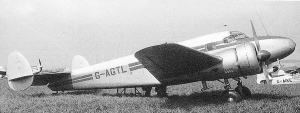
Some discussion of the names of those recorded as being on
board the aircraft outside Ballina is required as the various
sources above, do not go into great detail.
The Cork Examiner printed that it was one "Wing
Commander T. S. Cotten", this may well
have been the next owner of the aircraft, the famous aviator,
Frederick Sydney Cotton.
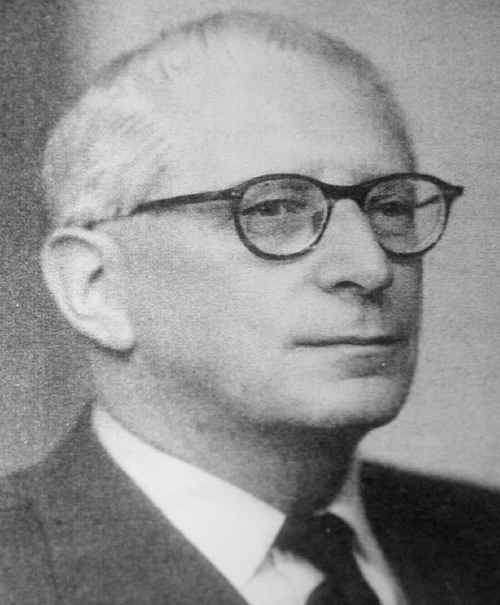 He held the rank
of Wing Commander during the war with the RAF. If this is
the case, Mr. Cotton was quite a famous personality during the
war. A short biography of him is presented on this page
from the A.E.G. group, and contains the following
interesting paragraph about his post war activities.
He held the rank
of Wing Commander during the war with the RAF. If this is
the case, Mr. Cotton was quite a famous personality during the
war. A short biography of him is presented on this page
from the A.E.G. group, and contains the following
interesting paragraph about his post war activities.
"Knowing that the RAF still had a
number of Lockheeds he persuaded an American with dollars to
buy them all and sell them on. Both Sidney and his
co-dealer made money from the deal and each kept a Lockheed
12 and a stack of spares. Now with Caprice, which he
named his own plane, he could widen his sphere of activity."
He was often mentioned wartime newspapers, and his pre war
exploits in photo reconnaissance and the setting up of the RAF's
photographic Reconnaisance Unit (PRU) were made know to the
public in 1943 when he was awarded an Order of the British
Empire.
A 1946 Australian newspaper described thusly:
The People's Car
W/CDR. F. SIDNEY COTTON
BORN IN BOWEN
NOW LONDON FINANCIER
Wing Commander Sidney Cotton, who was born in Bowen, and is
now a London financier, is heading a syndicate to purchase
the whole of the plant and stock of Grantham Productions
Limited, makers of the "People's Car," which went into
liquidation with £1,000,000 worth of orders on hand. Wing
Commander F. Sidney Cotton who was educated at the Southport
School, is a son of the late Mr. A. J. Cotton, who
owned Bromley Park and Goorganga Stations in the Proserpine
district. He went to London in 1915 and joined the British
Flying Corps, serving with distinction during the 1914-18
war. He invented the Sidcot flying suit, which later became
part of the equipment of the R.F.C. He took part in the
London to Capetown flight in 1919, and in November of that
year made the first aerial survey of a flying route to
Newfoundland.
Later he established the first regular flying service
to Newfoundland and Labrador, In the last war he carried out
important reconnaissance work over Germany, establishing the
proficiency of a special camera, which the R.A.F. tried
without success. In 1943 he was awarded the O.B.E. for his
services. His exploits are believed to have been the
beginning of the R.A.F.'s Photographic Reconnaissance Unit.
Mrs. Cotton lives with him in England. A son, who was
born in Brisbane in 1919, has been engaged at the Mt. Isa
Mines.
F S Cotton would appear mentioned in newspaper articles in the
Irish Independant in February and March 1946. An article
dated the 20th of March 1946 describes F S Cotton OBE as a
frequent visitor to Collinstown.
NEW RADIO GUIDE FOR 'PLANES
In a flight along the east coast an Irish Independent
representative had an opportunity of seeing in operation the
Decca Navigator, a British navigational instrument that was
developed during the war and had actually its first try-out
when it guided the Allied invasion fleet to the Normandy
coast on D-Day. He describes in the following article the
usefulness and efficiency of the instrument.
I MADE the flight, he writes, in a Lockheed 12-A
belonging to Mr. F. S. Cotton, O.B.E., the Irish-Australian
aeronautical inventor, who is a frequent visitor to
Collinstown. With us was Group Captain E. Fennessy, O.B.E.,
a director of the Decca Navigator Co.
The second passenger during the landing in Rehins, the second
civilian, Mr. Jonasses or Janessen was said to
be from Norway by the Ballina Herald and the Cork
Examiner. They appear to have gotten details about Dold
and Cotton correct, and assuming the names were collected by
local reporters, one would hope they were correct in that
aspect. Nothing firm is known about this person at this
time. Norwegian historians have advised that neither
spelling are common Norwegian surnames. The names
published by the Cork Examiner in the case of Dold and Cotton
have proved to be most accurate, so it is thought Janessen will
be the surname.
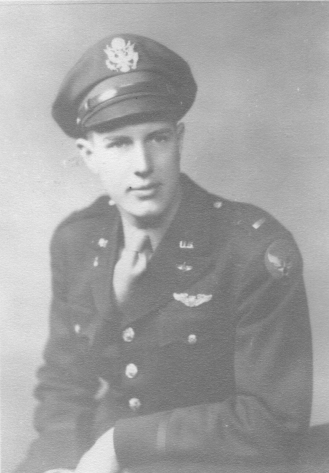 The pilot of the aircraft was
revealed after some searching as being Charles C. Dold
from Erie County, New York. He enlisted with the US
Army in 1942 in Ohio.
The pilot of the aircraft was
revealed after some searching as being Charles C. Dold
from Erie County, New York. He enlisted with the US
Army in 1942 in Ohio.
He wrote to me in 2008 to say that he was at that
time assigned to the Mission for Economic Affairs in London, the
successor body to the Harriman Mission. That US government body
was linked to the US Embassy in London. Mr. Dold, who went on to
study business said how he and Sgt. Hale stayed over night in a
Dublin hotel. He did not however remember much of his passengers
or of the purpose of the flight. His letter read:
The reason I crashed
in Balina was that I ran out of gas - a stupid thing to
do. I did not know how to buy gas in Dublin.
I believe the pictures you sent were probably of my plane.
I presume the passenger Mr Cotton may have been the
Australian but I really don't know.
As I remember Mr. Jonasses was the Norwegian but I am not
sure of the name.
Sargeant Hale and I stayed the night before the crash in
some hotel in Dublin.
I don't remember the mission of that flight. Nor was
the aircraft assigned to the U.S. Embassy. At that time I
was. My role at the economic Mission was as pilot. I
stayed there for another year before being sent back to
the states and discharged.
The photo below shows Charles C Dold with his wartime bomber
crew from the 34th Bombardment Group (Heavy) of the US Army Air
Forces. He flew the Boeing B-17 bomber on missions over Europe
and is the second from the left, standing at the rear of the
group. This photo came from the website of the late Gary Ferrell
on the 34th Bomb Group Valor to
Victory. The portrait image comes from his prewar Oberline
University magazine.
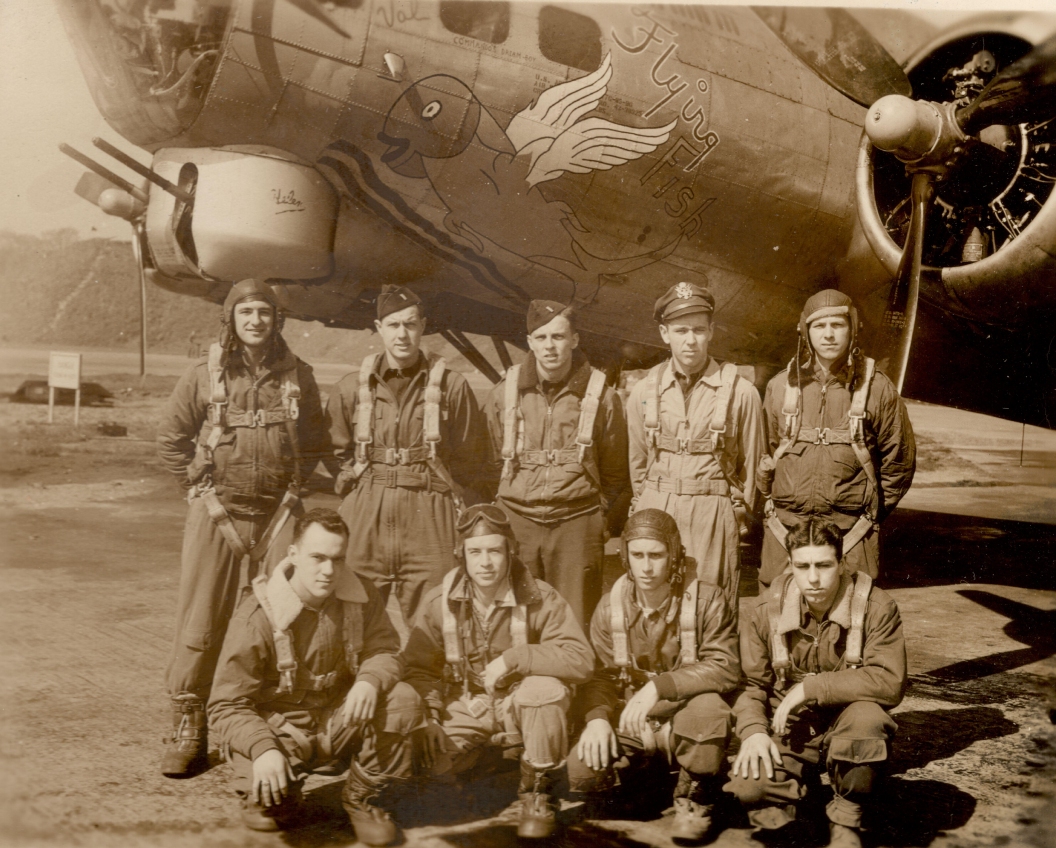
The names above are written on the reverse as:
Merk, "Me", Erick, Buck, Mathe,
HIGIE Robie, Lester, Toby
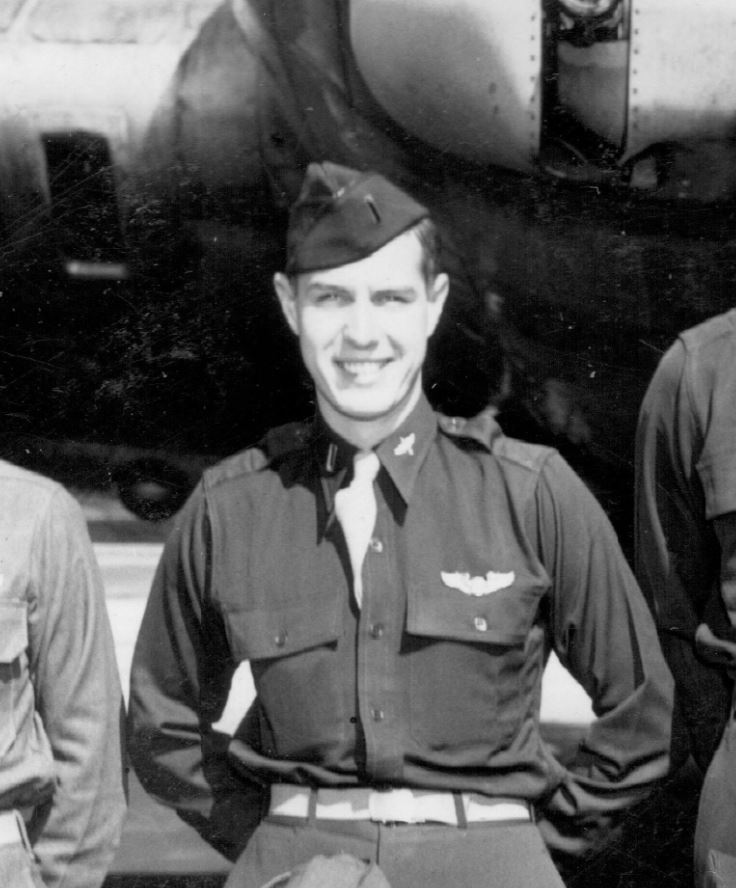
Charles passed away on 9 December 2011 in Ramona, San Diego,
California.
The military report and the paper articles say that the
aircraft had flown from Hendon, London to Collinstown (Dublin
Airport) on 28 July 1945, which was a Saturday. The passengers
are described as being 'guests of Senator Quirke over the
weekend". There was a Senator Bill Quirke in the Irish
Senate at that time. He hailed from Fethard in Tipperary.
His family were of the opinion that while his wife and children
may have been holidaying in Cong, Co. Mayo, it is possible that
Senator Quirke himself would have been in Dublin .
Lockheed 02947 did not end its days dismantled in a Mayo field. Peter J Marson' s book "The Lockheed Twins" gives the following history of c/n 1287, BuNo 02947:
-
Leased to RAF as D2947 Aug45 [an "official" typo for 02947?]
-
Registered to F Sidney Cotton G-AGTL "Caprice" 19 Sep. 1945
Delivered 26 Nov. 1946, E-10601 19 Nov. 1946. Used for radio aids development work.
C. of A. 5 Dec. 1946, to Aeronautical & Industrial Research Corp.
Details of a contract to Short and Harland to cover the repair
of a "US Navy R30-2947" was posted on the Air Britain
Information Exchange Forum in 2003. John Gregory identified the
aircraft as 02947 and Vic Smith was able to supply further
information confirming the repair. However, the contract was
dated after the aircraft was registered to Sidney Cotton on 19th
September, 1945.
Subsequently (from the book, Lockheed Twins), the aircraft was sold on to K. McAlpine in May 1957 and used by Sir Robert McAlpine & Sons Ltd. Sold in France in Jan 1961, it became F-BJJY on 15 March 1963 with 'Escadrille Mercure'. Despite a series of landing accidents, it remained with them until its C. of A. expired on 08 June 1981. It was then sold to Paul Boucher & Phillippe Denis and delivered April 1982 to La Mole. Its C. of A. expired July 1989. the registration was cancelled 29 August 1996 and it was withdrawn from use. It was sold to Jean-Luc Langeard and re-registered F-AZLL in which marks it appeared at the Paris Air Show in 2003 looking better than new! The aircraft now sports three bladed propellers.
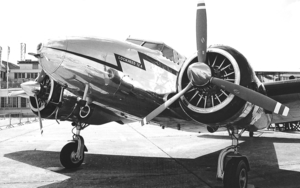
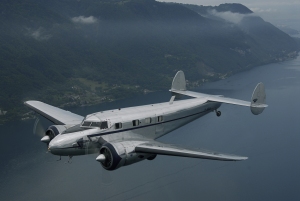
Many photos of the aircraft are available on www.airliners.net, and on
the internet in general, just search for F-AZLL. The Lockheed
12A pilot reports are available on www.airbum.com.
In 2018, the aircraft was repainted to resemble Lockheed 10,
registration NR16020 as flown by Amelia Earhart on her doomed
round the world flight attempt in 1937. Photos from
May 2023 can be seen here.
And so a little more information is added to the history of Irish Wartime crashes. The above story was put together from work carried out by Antoin Daltun, John Gregory, George Kernahan and Vic Smith with input's from various books and from Clair Waterbury, a wartime pilot of the subject aircraft. Many thanks must go to the four gentlemen for passing the information to myself and allowing its use. They are all members and users of the AB-IX Air Britain Information Exchange. Thanks also go to the Irish Military Archives for the use of their files.
Other links of interest:
- A thread from the 12 O'Clock High message forum, discussing some of Cottons activities.
- A Sidney Cotton website from Australia
- Irish Senate, Mention of Death of Senator Quirke - irlgov.ie
- An artical with mention and photo of Bill Quirke from Fethard Newssite
- Jack McKillop's history of the Naval Lockheed 12A aircraft
- History of USAAF C/UC-40 aircraft.
